Since the release of the Toyota Prius in 1997, it has opened up a huge market for Japanese hybrid cars, and to this day, Japanese manufacturers still focus primarily on light hybrid electric vehicles (HEVs). However, in recent years, domestic manufacturers have risen one after another, gradually dividing the Japanese Toyota and Honda’s light hybrid HEV market.
As we all know, car companies such as BYD, Geely, and Ideal have started PHEV programs with large batteries.

As the green license plate quotas for hybrid cars in various regions will end in 2022, these PHEV hybrid models will face competition from fuel cars before EVs. Of course, there will still be hybrid enthusiasts willing to exchange their fuel car quotas for a new energy license plate, which is when everyone starts competing in technology and product strength.

PHEV?EREV?Can’t tell the difference
In the face of BYD’s DM-i “super hybrid system”, Geely has come up with its Thunderbolt hybrid technology.
So, what is the core technology of the Thunderbolt hybrid system? What is the difference between it and a normal hybrid system?

The well-known Ideal car is a traditional range-extender system, which is driven by an electric motor, but the extender’s power does not directly drive the wheels; the extender only exists to “charge” the battery.
However, on the Star Yue L range-extender version, it is a combination of P1+P2 motors, with the ISG motor, which is the P1 motor, located at the crankshaft end, between the engine and the gearbox. The engine’s crankshaft became the rotor of the electric motor, but it cannot directly drive the vehicle.
During acceleration, the motor can assist to make the process smoother, and energy can be recovered through regenerative braking during deceleration.
The P2 motor is located between the clutch and the transmission and can drive the front two wheels independently. It can also perform regenerative braking during braking.

So, the “range extender” of the Star Yue L extended-range electric version can actually directly drive the wheels, concretely as a hybrid extended-range electric SUV.
Have you seen an extended-range car that saves energy with automatic transmission?
Since driving new energy vehicles, people seem to have gradually forgotten about shifting gears. Even some manufacturers deliberately designed a “shift paddle” behind the steering wheel, which is used to switch between kinetic energy recovery and driving modes after a closer examination.
There are only a few new energy vehicles on the market that have shift functions, such as Porsche Taycan, Lotus ELETRE, and more, but they automatically shift under computer control after a certain speed is reached.
Since the P2 motor of the Star Yue L extended-range electric version is located before the transmission, the two front wheels driven by it need to go through the transmission, so it actually shifts gears in pure electric driving mode.
When I was learning about this car earlier, I found something interesting. While most manufacturers were specifying the highest speed around 170-180 km/h, the Star Yue L extended-range electric version showed a value of 220 km/h.

This 3-gear variable frequency electric drive DHT Pro achieves three gear ratios through two sets of planetary gears. First gear has a large gear ratio and can achieve a jump start. It can enter parallel mode when the speed is above 20 km/h. When driving on a highway above 80 km/h, it will determine whether to use third gear for cruising or second gear for overtaking according to the power demand.### Why use a large battery?
The reason for this system is that it supports direct drive of the engine to the wheels. When driving at high speeds, skipping the charging and discharging process reduces power loss. In this mode, the range of the Star Europe L Extended Range Electric version can reach 1,300 km, and even in pure battery drive extended range mode, the range can reach 1,250 km.
The core of the extended range vehicle is of course the extender. The performance of the extender directly affects the driving experience, and work vibrations, noise, and fuel consumption are the points that car users are most concerned about.
The Star Europe L Hi·P is equipped with the same 1.5T engine as the Hi·F version, with a maximum power of 110 kW, a compression ratio of 13:1, and a thermal efficiency of up to 43.32%. According to official propaganda, the electricity consumption of 15.4 kWh/100 km at 60 km/h and the deficit fuel consumption of only 5.3 L/100km in the WLTC working condition. The most critical thing is that it supports 92# gasoline in other extended-range cars limited to 95# gasoline.
So someone will ask, if it is equipped with the same extender, isn’t it the same?
The biggest difference between the Star Europe L Hi·P and Hi·F versions is the 41.2 kWh CTP flat battery. The pure electric range under WLTC conditions is 205 km. In the user’s car usage scenario, urban commuting still accounts for the majority, and a large battery can ensure that users can rely on cheaper charging to supplement energy for basic commuting every day, charging once a day or once every two days.
At the same time, a large battery means that it is not like other hybrids that can only perform low-power fast charging and AC slow charging. The maximum charging power of the Star Europe L Extended Range Electric version is up to 85kW, the 30%-80% fast charging time is 27 minutes, and it also supports 6.6 kW AC slow charging and 3.3 kW external discharge function, which can also provide power for camping.## The Insularity of Technology, The Extravagancy of Configuration
Perhaps having good hybrid technology alone cannot become a hot-selling point, product power is still the first priority.
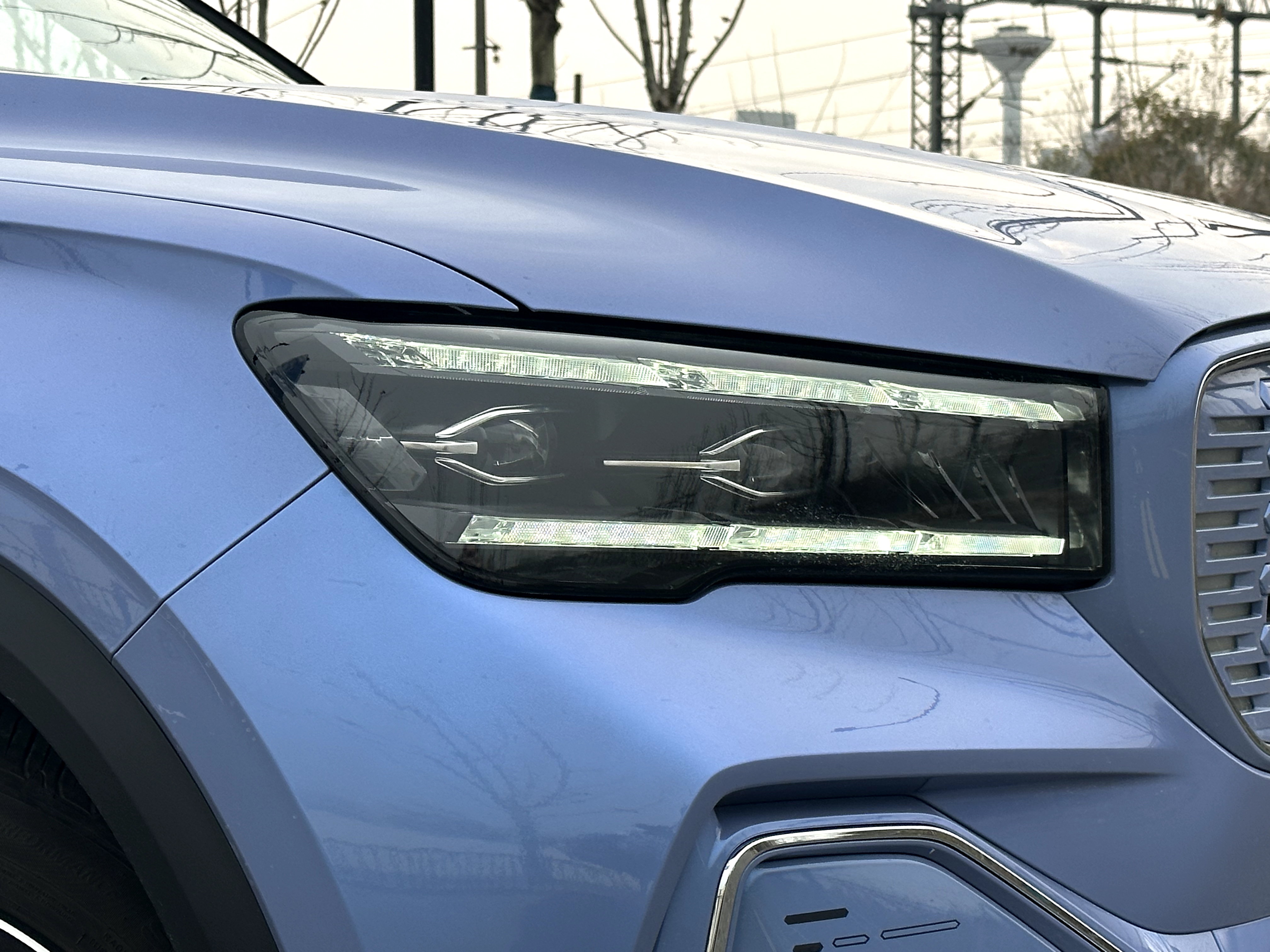
The Star Yue L extended-range electric version is equipped with a currently mainstream but uncommon Qualcomm Snapdragon 8155 cabin chip at the same price point, built with a 7nm process, featuring 16GB RAM and 128GB storage space. Meanwhile, the ideal L8 from next door only has 12GB RAM.
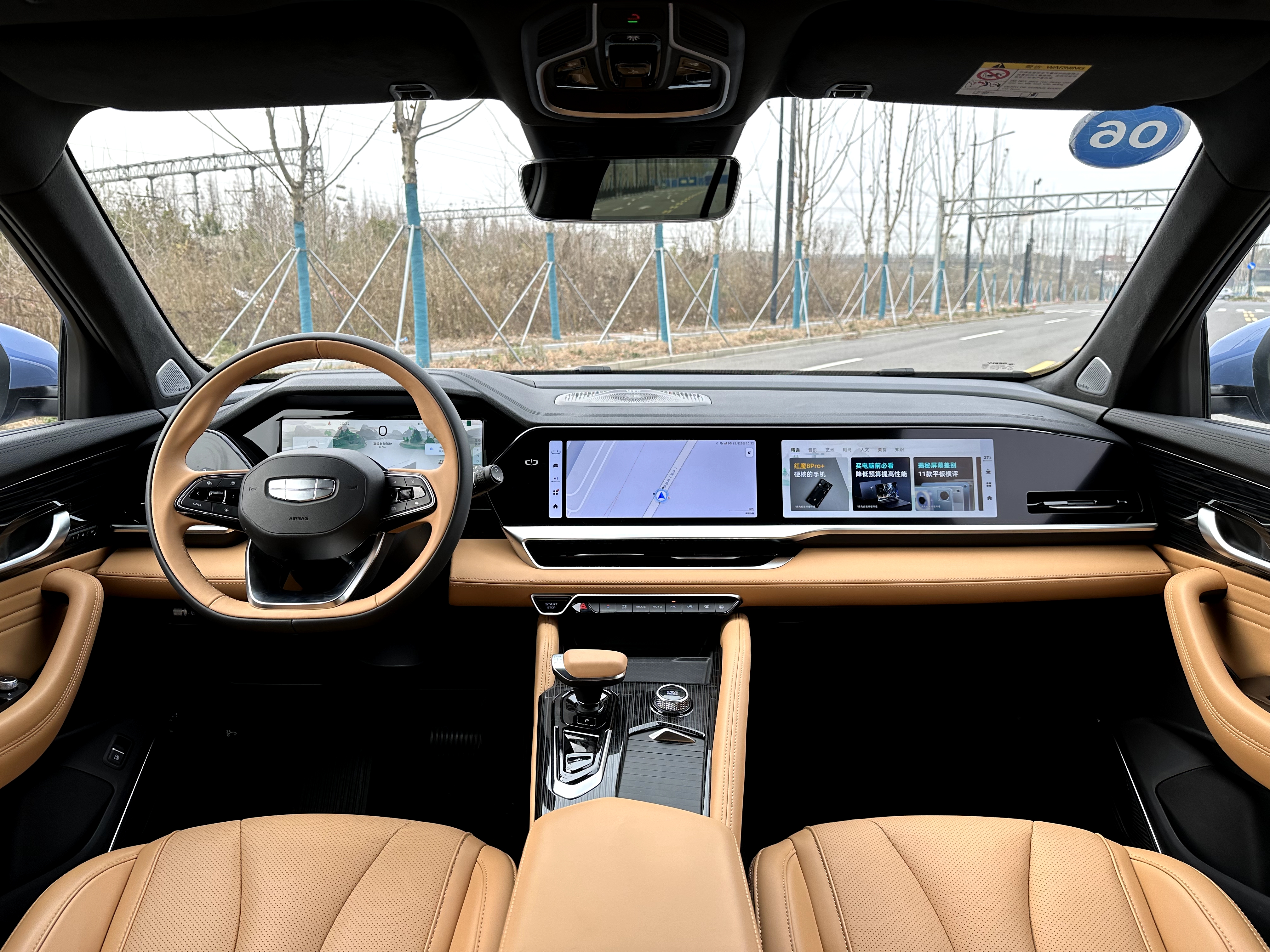
The design of the three screens also takes care of the viewing and usability of each person in the car, and is equipped with a 25.6-inch AR-HUD that projects and covers three lanes.


A good car chip alone cannot fully take advantage of its potential without a well-designed car machine. Fortunately, the rich application market and smooth operation of the car machine help the 8155 chip shine.
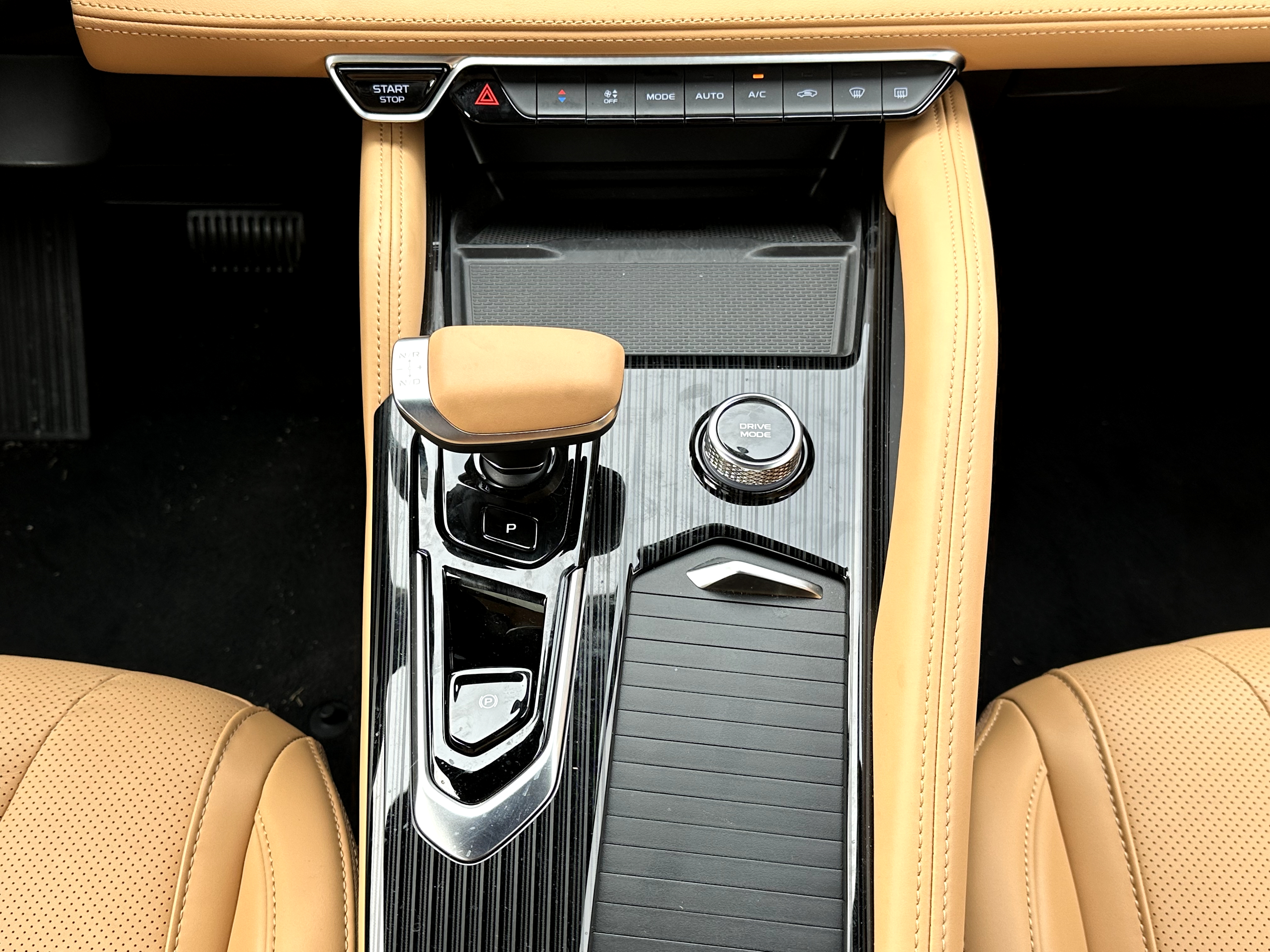
In addition to the standard wireless charging, there is also a considerate provision of a Type-C port with a maximum power of 60W and a 12V 120W power source.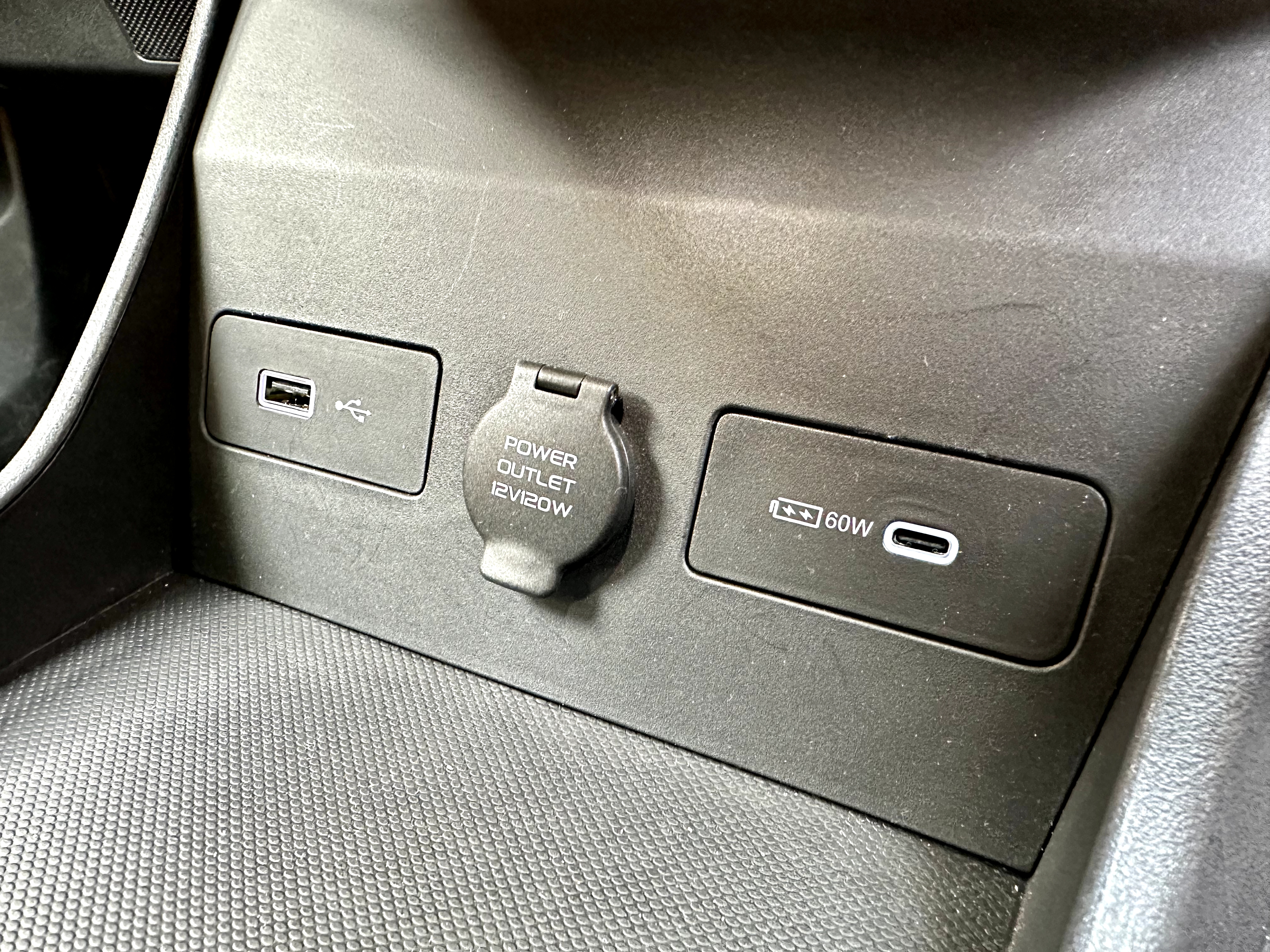
At the same time, there is no blindly followed panoramic sunroof in a block style. The two-segment panoramic sunroof not only makes the whole cabin brighter, but also increases the torsional rigidity of the body and the stability of the chassis.

Coupled with the caramel brown NAPPA top layer leather interior, the steering wheel is not made in pure black like other models. It adopts a dual-color design, and the grip is also very comfortable. The design of the upper round and lower flat considers more usage scenarios for users.
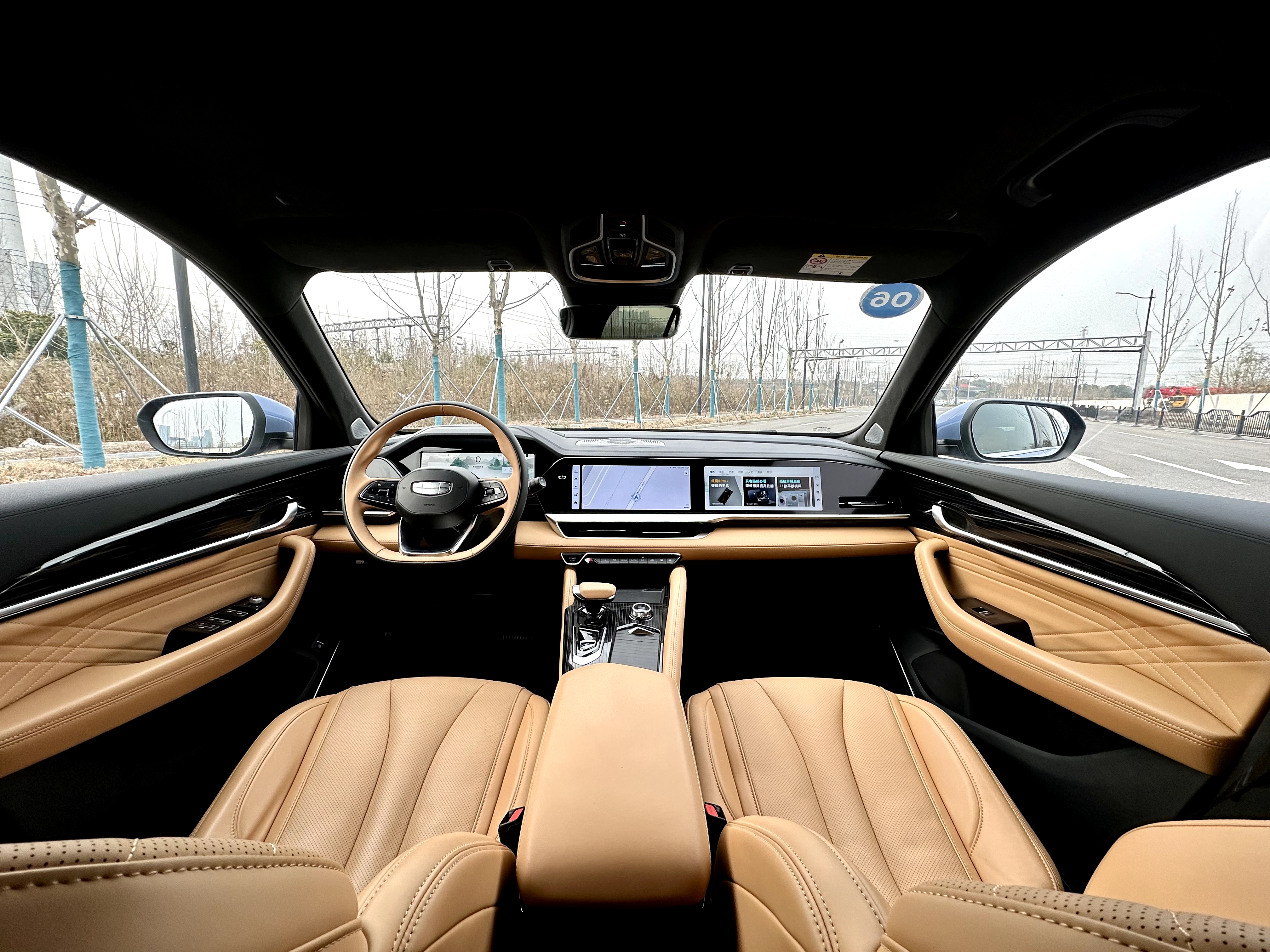
The interior is differentiated using four different colors and materials, which is visually rich and does not feel monotonous after long-term viewing. The areas in contact with the body for a long time are almost all wrapped in leather, with a comfortable soft and hard touch that does not produce a cheap feeling.
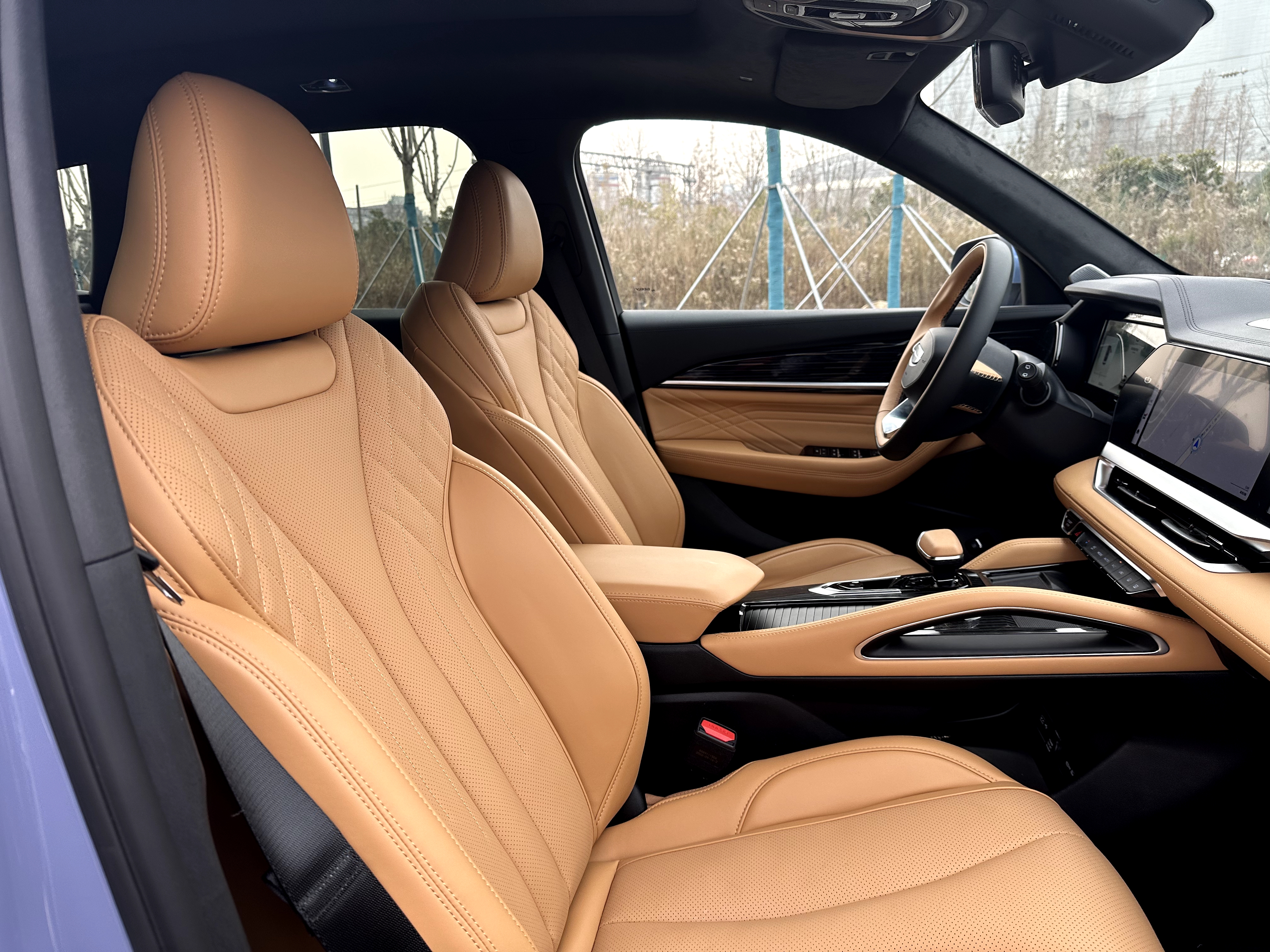
Conclusion
Nowadays, electrification is not as simple as installing a battery and a motor on a car. With the internal competition of various car manufacturers, the battery has gradually increased from the original standard of 70 kWh to 100 kWh, and each manufacturer is expected to launch a 150 kWh battery next year. However, the increase in battery capacity also has a corresponding impact on the price of the car.
In the era where price is the basis of sales, good products also depend on the correct pricing. Perhaps in the market where the pricing of most hybrid cars is high, it can still stand out with a comprehensive subsidy of 239,700 – 253,700 yuan?
车辆保养清单
常规保养
- 更换机油及机油滤清器(
<span style="color:red">建议每10000公里更换</span>) - 检查并更换空气滤清器(
<span style="color:red">建议每20000公里更换</span>) - 更换燃油滤清器(
<span style="color:red">建议每40000公里更换</span>) - 更换火花塞(
<span style="color:red">建议每50000公里更换</span>)
额外保养
- 发动机正时皮带更换(
<span style="color:red">建议每6年或10万公里更换一次</span>) - 刹车油更换(
<span style="color:red">建议每2年更换一次</span>) - 变速器油更换(
<span style="color:red">建议每4年或8万公里更换一次</span>)
以上保养清单为建议项,具体以车型说明书为准。
Vehicle Maintenance Checklist
Routine Maintenance
- Change the engine oil and oil filter (
<span style="color:red">suggested replacement every 10,000 kilometers</span>) - Inspect and replace the air filter (
<span style="color:red">suggested replacement every 20,000 kilometers</span>) - Replace the fuel filter (
<span style="color:red">suggested replacement every 40,000 kilometers</span>) - Replace the spark plug (
<span style="color:red">suggested replacement every 50,000 kilometers</span>)
Additional Maintenance
- Replace the engine timing belt (
<span style="color:red">suggested replacement every 6 years or 100,000 kilometers</span>) - Replace the brake fluid (
<span style="color:red">suggested replacement every 2 years</span>) - Replace the transmission oil (
<span style="color:red">suggested replacement every 4 years or 80,000 kilometers</span>)
The above maintenance checklist is for reference only. Please refer to the vehicle owner’s manual for specifics.
This article is a translation by ChatGPT of a Chinese report from 42HOW. If you have any questions about it, please email bd@42how.com.
